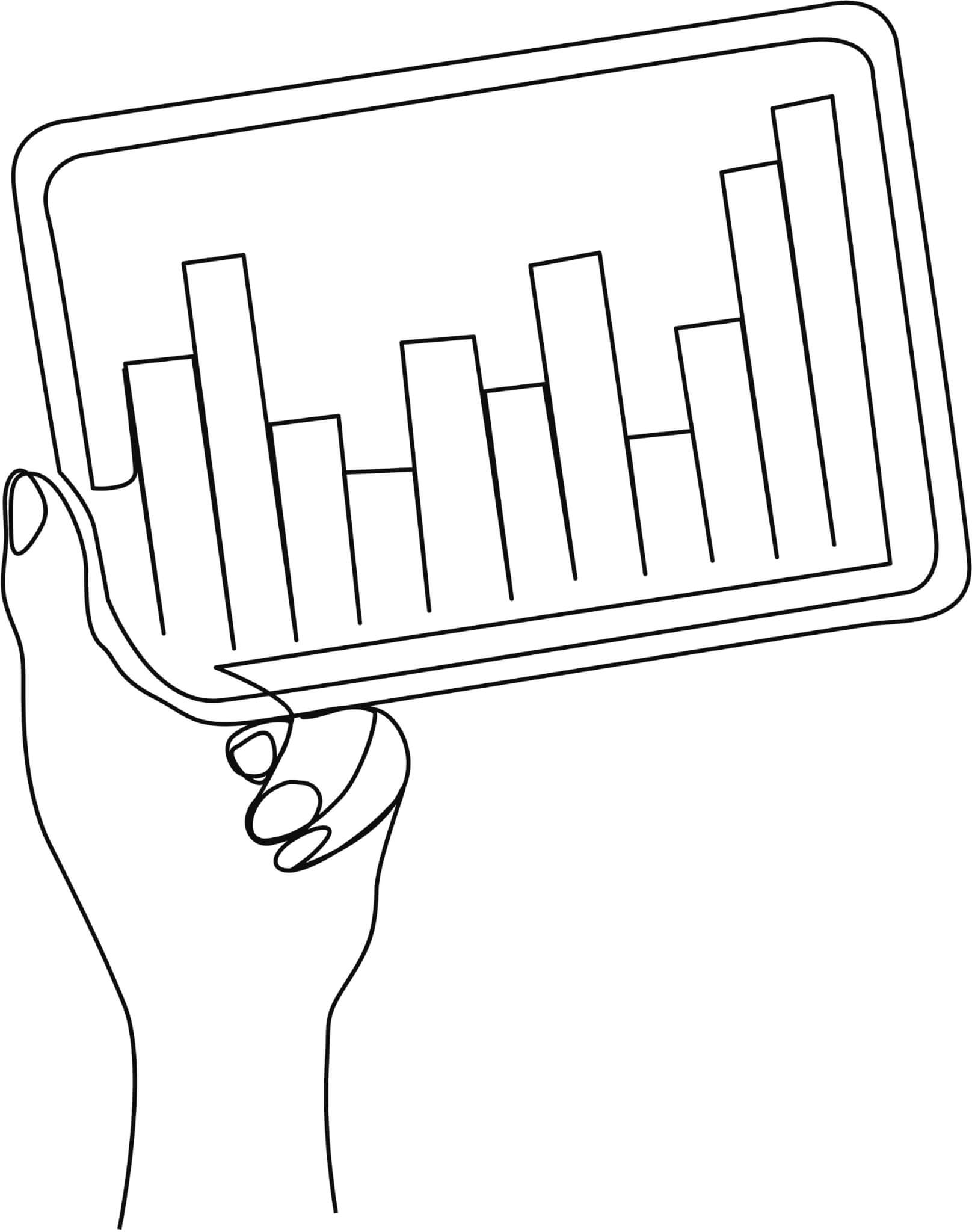Facebook ads campaigns are integral to online marketing strategies for businesses across industries and niches. Whether you’re a B2B or B2C company, advertising on Facebook can deliver fantastic results by targeting your ideal audience. In this article, we’ll guide you through the steps to create a successful Facebook ad campaign and maximise your ROI.
In a quick summary, these are the steps you will follow for your first Facebook ads campaign:
- Step 1: Setting Up Your Facebook Page
- Step 2: Defining Your Target Audience
- Step 3: Crafting The Perfect Ad Creative And Persuasive Ad Copy
- Step 4: Choosing The Right Call To Action
- Step 5: Identify The Best Ad Placement For Your Ads
- Step 6: Optimising Your Landing Page
- Step 7: Tracking And Measuring Your Facebook Campaigns
Step 1: Setting Up Your Facebook Page
Before creating an ad, you need a Facebook page for your business – a platform where you share relevant posts, engage with your target audience, and showcase your products or services. A well-optimised Facebook page can provide social proof, building credibility and trust with potential customers.
The general checklist you should take into consideration when building your first business Facebook page:
- Contact information: Ensure your business’s contact details are accurate and up-to-date, including your phone number, email address, website, and physical location (if applicable).
- Business category: Select the appropriate business category that best describes your company that helps users understand what your business does and makes it easier for them to find you through Facebook’s search function. The right category also helps Facebook provide relevant suggestions to users based on their interests.
- Business Description: Craft a concise business description highlighting your company’s purpose, products or services and unique selling points. The description should be engaging and informative, allowing users to explore your page further.
- Customise messages on Messenger: Personalise your Messenger’s automated responses and greetings to match your brand’s voice and tone to create a consistent user experience and helps you engage with potential customers more effectively. You can also set up frequently asked questions (FAQs) to provide instant support to users who message your business.
- Customer posts: Encourage customers to share their experiences, reviews, and photos on your Facebook page. User-generated content can provide social proof and help build trust among potential customers. Respond to customer posts and comments to show that you value their feedback and actively engage with your audience.
- Reviews: Enable the reviews section on your Facebook page and encourage customers to leave feedback. Positive reviews can significantly influence potential customers’ decision-making process. Respond to positive and negative reviews to demonstrate your commitment to customer satisfaction.
- Photos: Upload high-quality, visually appealing images that showcase your products, services, or behind-the-scenes glimpses of your business. Regularly updating your photo gallery keeps your page fresh and engaging, attracting more users to explore your content.
- Business logo: Use your company’s logo as your Facebook page’s profile picture to create brand recognition and consistency across different platforms. Ensure that the logo is clear, properly sized, and easily identifiable.
- Events: If your business hosts or participates in events, create and promote these events on your Facebook page to help drive attendance, generate buzz, and keep your audience engaged. Be sure to include all the necessary details, such as date, time, location, and a link to register or buy tickets.
- Check-ins: If applicable, encourage customers to check in at your physical location. Check-ins can act as social proof and help increase your business’s visibility on Facebook. Respond to check-ins with a thank-you message or a special offer to show appreciation and encourage repeat visits.
Step 2: Defining Your Target Audience
Identifying your target audience is crucial for the success of your Facebook ads campaign. You want to reach the right people interested in your product or service. Facebook offers various targeting options, allowing you to narrow your audience by demographics, interests, behaviours, and more.
If you are spreading your audience net too broad, you may not get quality leads with it, but if you narrow your audience to a tee, you might limit your reach to a smaller pool, thus missing out on potential new audience available.
KitKat Malaysia, a chocolate brand company, saw a 3x increase in reach with lower cost spent compared to other media and a 16x brand awareness increase derived from the Meta apps advertising platform. They not only present all ads to people interested in desserts and chocolate in general, but they utilise the lookalike audiences who have visited Nestlé’s Facebook Page and product website. Combining general audience groups with custom audience markup helps them achieve their reach objectives.
Step 3: Crafting The Perfect Ad Creative and Persuasive Ad Copy
An eye-catching ad creative is essential for capturing the attention of Facebook users. Consider using high-quality images, a compelling headline, and concise ad copy that conveys the benefits of your product or service. For a more engaging experience, consider using a Facebook video or carousel ad to showcase multiple products or features.
Excellent ad copy can make or break your Facebook ad campaign. Keep your message clear, concise, and focused on the benefits of your product or service. Highlight any special promotions, such as free shipping or limited-time offers, to encourage potential customers to take action. Including social proof, such as testimonials or ratings, can also boost the credibility of your advertising.
Step 4: Choosing The Right Call-to-Action
A solid call to action (CTA) can significantly increase the chances of a Facebook user clicking on your ad. Select a CTA that aligns with your marketing goals, such as “Shop Now,” “Learn More,” or “Sign Up.” Make sure it stands out visually and encourages potential customers to take the desired action.
Step 5: Identify The Best Ad Placement For Your Ads
Facebook ad campaigns have a long list of ad placements for different purposes that serve different results for your campaigns. Choosing suitable ad placements can make or break your Facebook ad campaign.
Types of ad placements in Facebook ad campaigns:
- Desktop newsfeed
- Mobile newsfeed
- Right column
- Carousel
- Messenger
- Instant article
- In-steam videos
- Audience network
BlendJet, a portable blender company, saw a 4x increase in revenue after implementing a Facebook ads campaign. They used carousels and video ads to showcase their product’s benefits and targeted their ads to reach their ideal audience. This strategy helped them generate over 12,000 new customers in just a few months.
Step 6: Optimising Your Landing Page
Once a user clicks on your ad, the landing page they land on is where you’ll provide more information about your product or service and encourage them to complete a specific action. Ensure your landing page is consistent with your ad creative and copy and that it’s easy for visitors to navigate and convert.
These are some quick wins you can apply to optimise your landing page:
- Consistency in design and messaging: Your landing page should visually align with your ad creative and maintain a consistent message. Use similar colours, fonts, and imagery to create a cohesive user experience.
- Clear and concise headlines: The headline on your landing page should communicate your offer and its value proposition. Ensure that it’s easy to understand, grabs the user’s attention, and aligns with the message in your ad copy.
- Focused content: Keep the content on your landing page focused on the campaign’s primary goal. Avoid overwhelming users with too much information or multiple offers.
- Engaging visuals: Use high-quality images, videos, or other visuals to support your messaging and showcase your product or service to make your offer more compelling.
- Strong call-to-action (CTA): Your CTA should be prominently displayed, visually distinct, and communicate the action you want users to take. Make sure it’s easy to find and click, as this can significantly impact your conversion rate.
- Simplified forms: If your landing page requires users to fill out a form, keep it as straightforward as possible. Limit the number of fields to only what’s necessary, as lengthy forms can discourage users from completing the desired action.
- Mobile optimisation: Ensure your landing page is responsive and optimised for mobile devices. A mobile-friendly design can improve the user experience and increase the chances of conversion.
- Fast loading times: Slow-loading landing pages can lead to user frustration and high bounce rates. Optimise your page for speed by compressing images, minimising heavy scripts, and using a reliable hosting service.
- Tracking and analytics: Set up tracking tools, such as Google Analytics or Facebook Pixel, to measure the performance of your landing page. It will help you gain insights into user behaviour, identify areas for improvement, and optimise your landing page for better results.
Step 7: Tracking And Measuring Your Facebook Campaigns
To determine the success of your Facebook ad campaign, you’ll need to track and analyse its performance. Facebook provides a range of metrics, such as reach, impressions, clicks, and conversions, to help you understand how well your ads perform. Reviewing these metrics can help you optimise your campaign and improve your ROI.
These are the standard metrics you can measure your Facebook campaign performance:
- Reach: Reach refers to the total number of unique Facebook users who have seen your ad. This metric provides an estimate of your ad’s visibility and audience exposure.
- Impressions: Impressions represent the total number of times your ad was shown on Facebook, regardless of whether it was viewed by the same user multiple times. This metric gives you an idea of the overall visibility of your ad.
- Clicks: Clicks are the total number of times users have clicked on your ad, whether on the image, text, or call-to-action button. This metric indicates the level of engagement your ad is generating.
- Click-Through Rate (CTR): CTR is the percentage of users who click on your ad after seeing it, calculated by dividing clicks by impressions. A higher CTR indicates that your ad is relevant and engaging to your target audience.
- Cost per Click (CPC): CPC is the average amount you pay for each click on your ad. This metric helps you understand the efficiency of your ad spend and allows you to compare the performance of different ads or campaigns.
- Conversions: Conversions are the number of users who completed a desired action after clicking on your ad, such as purchasing, signing up for a newsletter, or filling out a form. This metric shows the effectiveness of your ad in driving users to take specific actions.
- Conversion Rate: Conversion rate is the percentage of users who completed a desired action after clicking on your ad, calculated by dividing conversions by clicks. A higher conversion rate indicates that your ad and landing page effectively persuade users to take the desired action.
- Cost per Conversion: Cost per conversion is the average amount you pay for each completed conversion. This metric helps you understand the efficiency of your ad spend in driving desired actions and allows you to compare the performance of different ads or campaigns.
- Return on Ad Spend (ROAS): ROAS is the revenue your ad campaign generates divided by the total amount spent on the drive. This metric helps you evaluate the overall profitability of your Facebook ads and determine whether your ad spend is generating a positive return on investment.
Final Takeaways
Running a successful Facebook ads campaign requires careful planning, strategic targeting, and compelling creative content. Following the steps outlined in this guide, you can create an effective advertising strategy that resonates with your target audience and drives tangible results for your business. Keep in mind that constant testing and optimisation are key to maximising your ROI and ensuring the long-term success of your Facebook campaigns.
Sources:
Mediaboom (2023) Facebook Page Optimization Checklist – 17 Steps to Follow
ThriveHive (2018) Checklist for an Effective Facebook Business Page
Rebecca Riserbato, Hubspot (2020) What a Social Media Target Audience Is and How to Find It
Priya Nain, Inturact (2023) How Should Your App Onboarding Work?
John Martin, WebStrategies (2015) Top Metrics for Online Paid Ad Campaigns
Facebook Business. (n.d.). BlendJet
Facebook Business. (n.d.). KitKat Malaysia




